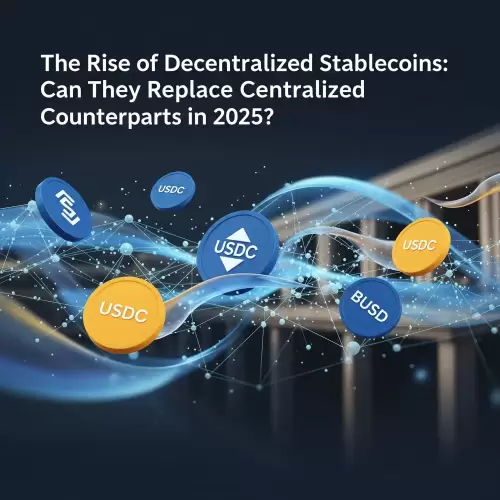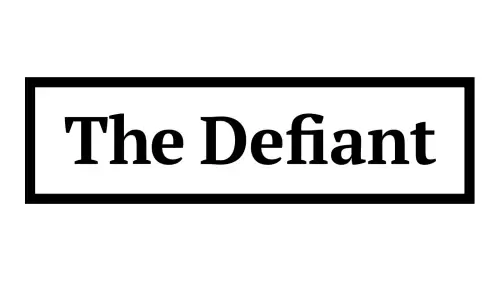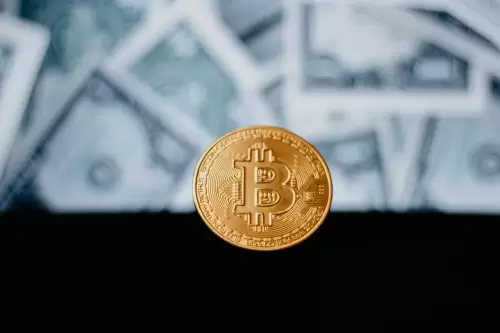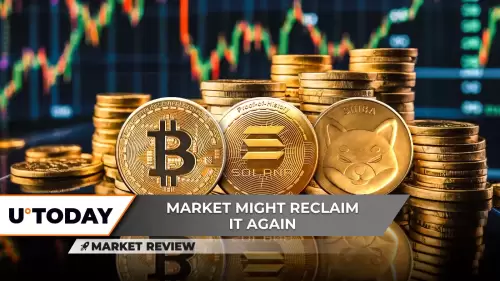 |
|
 |
|
 |
|
 |
|
 |
|
 |
|
 |
|
 |
|
 |
|
 |
|
 |
|
 |
|
 |
|
 |
|
 |
|
Cryptocurrency News Articles
Trump, DeFi, and Stablecoins: A New York Minute on USD1 Vaults and Ripple's Rise
Jun 30, 2025 at 03:06 pm
Analyzing the intersection of Trump-era policies, DeFi innovation, and the burgeoning stablecoin market, with a spotlight on WLFI's USD1 vault and Ripple's RLUSD surge.

Yo, what's the deal with Trump, DeFi, and stablecoins? It's like a triple shot of espresso for the financial world. Let's break it down, New York style.
Trump's Trade Moves and DeFi Ripples
Remember when Trump's trade policies caused a stir? Canada scrapped its Digital Services Tax to get back in his good graces, proving that even in the digital age, old-school politics still hold sway. That move alone caused some market jitters, showing how intertwined traditional finance and the digital world have become.
WLFI's USD1 Stablecoin Vault: A DeFi Power Play
World Liberty Financial (WLFI), with ties to the Trump family, is making moves in the stablecoin game. They've teamed up with Re7 Labs to launch a stablecoin vault for their USD1 stablecoin, hosted on Euler and Lista. Think of it as a digital piggy bank where you can earn yield by lending out your USD1 on decentralized platforms. This is all happening on Binance's BNB Chain, known for its speed and low fees. The goal? To make USD1 a go-to stablecoin for DeFi applications, from lending to trading.
And get this: Hong Kong's VMS Group is throwing up to $10 million at Re7 Labs as part of the deal. It's their first crypto rodeo, showing that even traditional investors are starting to see the potential of DeFi.
Strategic Moves for USD1
This vault lets users earn yield on USD1 by providing liquidity in decentralized lending markets, expanding its presence on the BNB Chain. Euler and Lista automate borrowing and lending with smart contracts, cutting out the middleman and making things transparent. Integration with Lista taps into liquid staking, crucial to BNB Chain's DeFi setup. WLFI and Re7 want USD1 to be a DeFi foundation for lending, trading, and settlements. VMS Group's investment will scale the vault and support yield strategies.
Ripple's RLUSD: The $10 Billion Milestone
Meanwhile, Ripple's RLUSD stablecoin is making headlines with a whopping $10 billion in daily transaction volume. That's like rush hour on the blockchain! The supply of RLUSD on Ethereum has been skyrocketing, signaling its growing utility in DeFi and payment apps. People are clearly digging dollar-pegged assets in the blockchain world.
RLUSD's 1:1 peg to the U.S. dollar offers stability, especially when the crypto market gets wild. Demand has been steadily rising, with both retail and institutional players using it for DeFi and cross-border payments.
Token Buybacks: Are They Legit?
Token buybacks are like a company buying its own stock – except it's happening in DeFi. The idea is to reduce supply and boost the token's value. Some say it's just an artificial pump, but others argue it shows a protocol's strength and commitment.
When done right, buybacks can work. They need to be timed strategically, funded by real revenue, and tied to token utility and ecosystem growth. Aave's buyback program is a good example, distributing tokens to stakers and encouraging governance participation.
Revenue-Based Buybacks
These are key because they show a protocol's financial health. Buybacks using treasury reserves can be misleading, especially for protocols with high token emissions. Jupiter DEX, for instance, allocates 50% of its revenue to buy back JUP tokens, creating a feedback loop where success enhances community governance.
Final Thoughts: The Future is Now
So, what's the takeaway? Trump-era policies, DeFi innovation, and stablecoins are all part of the same financial ecosystem now. Whether it's trade negotiations, stablecoin vaults, or token buybacks, the world of finance is changing faster than a New York minute. Keep your eyes peeled, folks – the future is now!
Disclaimer:info@kdj.com
The information provided is not trading advice. kdj.com does not assume any responsibility for any investments made based on the information provided in this article. Cryptocurrencies are highly volatile and it is highly recommended that you invest with caution after thorough research!
If you believe that the content used on this website infringes your copyright, please contact us immediately (info@kdj.com) and we will delete it promptly.






























































